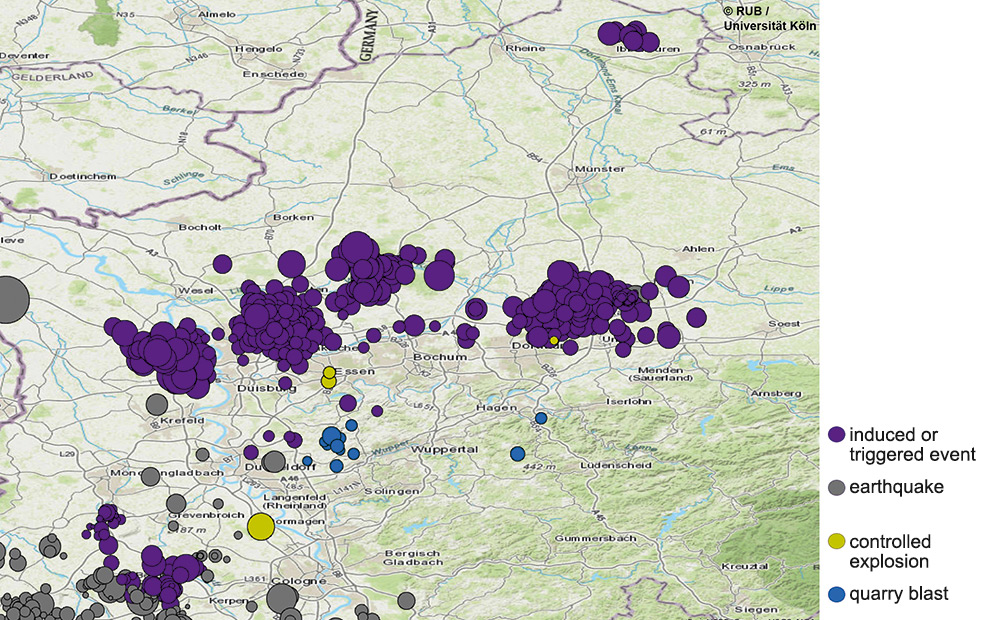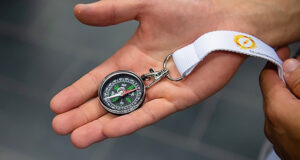Our underground is on the move. However, the shocks are often so small and spatially restricted that they are only detectable for very sensitive sensors. Even where mining was once conducted and people interfered with the natural geology and deposits, it may subsequently cause microseismic shocks. Paloma Primo, scientist at the Research Center of Post-Mining (FZN) at the TH Georg Agricola University (THGA), Bochum/Germany, pursues these mini-movements. In the new research project “PostMinQuake”, the expert examines how they occur exactly, identifies particularly endangered structures and develops a long-term risk management system for affected regions (Figure 1). To this end, she works closely with many European partners. Because also in the Czech Republic, Poland and France the post-mining period should not become a “nail-biting affair”. “The joint project is just as complex as the circumstances underground”, says Primo. “Our investigations go beyond the simple connections between seismicity and the geological activities in the decommissioned coal mines partly filled with water.”
Experts from various disciplines are working together in the project, including surveyors, geotechnical engineers or hydro-logists. Together they monitor the geological dynamics in the respective test areas, which have been changed by coal mining – in Germany this is mainly the Ruhr area, the Ibbenbüren and Aachen mining districts. “In these areas we document microseismic activities underground roughly once a week. There are also records from the past, which we analyse and put into context.” Primo obtains her data from the Geological Survey NRW, RAG Aktiengesellschaft, the Institute for Geosciences and Natural Resources (BGR), as well as seismological stations at the Ruhr-University Bochum (RUB). “At these stations we can determine time, size, place and depth of the event.”
The experts are pursuing an important common objective, explains Primo: “With our research we want to guarantee long-term safety, create transparency and inform the public. Because every municipality and every former mine operator should have sound knowledge of the processes that take place underground. When it comes to the topic of ground movements there are many fears and misunderstandings about what microseismic events are and the effects they can have.” Therefore, the main objective of the project is to gain a better understanding of the mechanisms of microseismic events after mining and create plans for the long-term monitoring of the soil after mining.

Fig. 1. Big data from the underground: In the PostMinQuake project the FZN evaluates lots of different geoinfor-mation – see here: Microseismic shocks in the Ruhr area from 2010 to 2020. // Bild 1. Big Data aus dem Untergrund: Im Projekt PostMinQuake wertet das FZN viele unterschiedliche Geoinformationen aus – hier zu sehen: mikro-seismische Erschütterungen im Ruhrgebiet im Zeitraum 2010 bis 2020. Source/Quelle: RUB/Universität Köln
What external factors cause the micro-shocks? What factors can be used to realistically simulate the impacts on the PC? And how can satellite images help to properly interpret the data acquired from underground? “We’re talking here about vast amounts of data, which first of all we have to standardise in order to make it comparable and then be able to evaluate it using the latest methods”, says Primo. Over the next three years the project team will develop a reference database from the findings for European areas after mining. The research should also help to develop new monitoring strategies and interpretation methods for areas with increased risk of earthquakes. The project is part of the EU-financed Research Fund for Coal and Steel (RFCS). (THGA/Si.)

